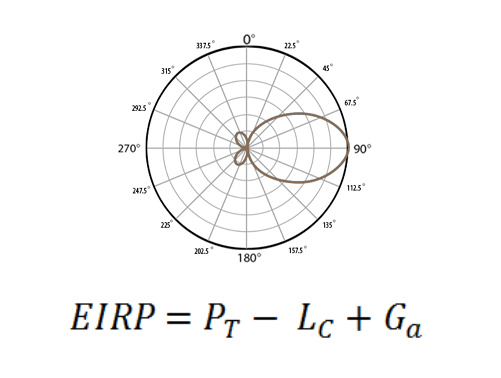 Home
Home
 Back
Back

Definition: This calculator determines the Effective Isotropic Radiated Power (EIRP), which is the power that would be radiated by an isotropic antenna to produce the same signal strength in a given direction as the actual antenna system, accounting for transmitter power, antenna gain, and losses.
Purpose: It helps RF engineers and system designers evaluate the effective power radiated by an antenna system, which is critical for assessing signal coverage, link budgets, and compliance with regulatory limits in applications like wireless communication, satellite systems, and radar.
The calculator uses the following formula to compute EIRP:
EIRP (dBm): \[ \text{EIRP (dBm)} = P_t + G - L \]
Where:
Unit Conversions:
Steps:
Calculating EIRP is essential for:
Examples:
Q: What is EIRP and why is it important?
A: EIRP (Effective Isotropic Radiated Power) is the power that would be radiated by an isotropic antenna to produce the same signal strength as the actual antenna system in a given direction. It’s important for evaluating signal coverage, link budgets, and ensuring compliance with regulatory power limits.
Q: How do losses affect EIRP?
A: Losses (e.g., cable losses, connector losses) reduce the EIRP by subtracting from the total power. Higher losses result in a lower EIRP, which can decrease the effective range of the system.
Q: What factors should be considered in real-world EIRP calculations?
A: Real-world EIRP calculations should account for additional factors like environmental losses (e.g., atmospheric absorption), antenna efficiency, and polarization mismatch, which can affect the actual radiated power.